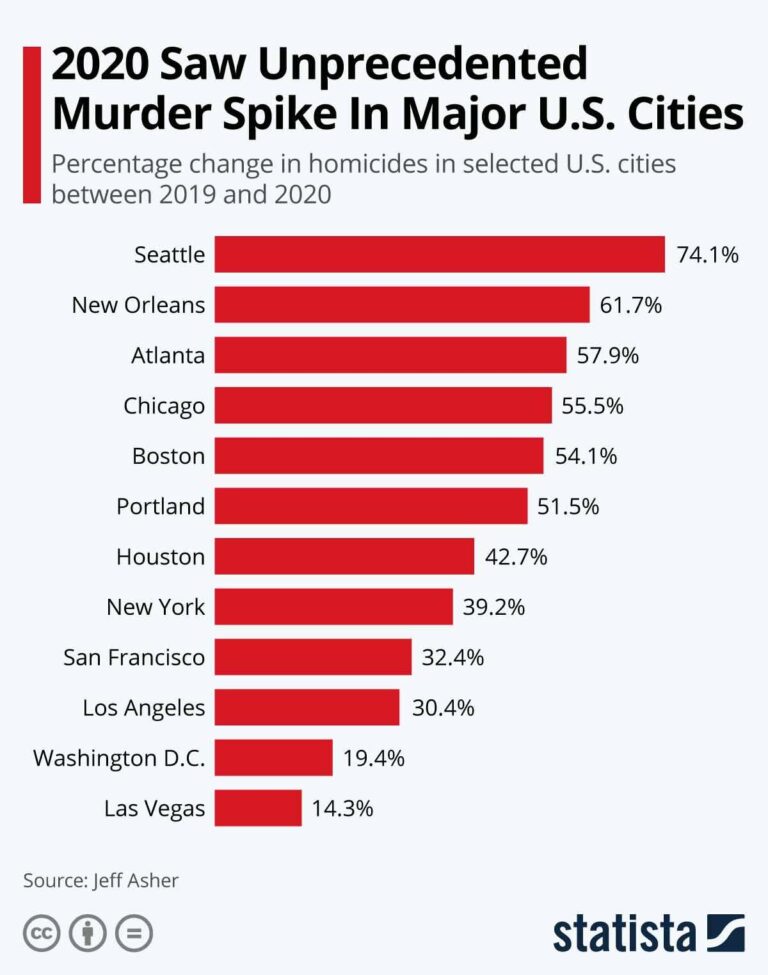In 2020, The New York Times published a revealing examination into the rising murder rates in New York City, a trend that has alarmed residents and policymakers alike. This comprehensive report delves into the complex factors driving the increase in homicides, challenging simplistic explanations and offering critical insights into how the city’s shifting social, economic, and law enforcement dynamics are shaping public safety. As New York grapples with this unsettling surge, understanding the truth behind the numbers is essential to crafting effective responses and restoring confidence in one of the nation’s most iconic urban centers.
Understanding the Factors Behind the Surge in Homicides
The recent spike in homicides across New York City cannot be attributed to a single cause; instead, a confluence of social and economic factors plays a pivotal role. Experts point to the strain induced by the COVID-19 pandemic,which exacerbated existing inequalities and disrupted community services. Together, the pandemic’s economic toll left many vulnerable populations without stable employment, leading to an increase in desperation-driven crimes. Additionally, reductions in police force presence and resources, attributed in part to budgetary reallocations and public scrutiny, have altered the dynamics of law enforcement engagement in high-crime neighborhoods.
Beyond the pandemic and policing, analysts highlight systemic issues and community-level challenges contributing to the uptick. Among these are:
- Rising Gun Availability: An influx of illegal firearms has substantially driven violent crimes.
- Mental Health Struggles: Increased untreated mental health issues within disenfranchised communities.
- Social Unrest: Heightened tensions between law enforcement and residents following high-profile incidents.
- Fragmented Community Programs: Disruptions to youth outreach and mediation efforts amid funding cuts.
| Factor | Impact on Homicides |
|---|---|
| Economic Instability | High |
| Gun Violence | Critical |
| Police Engagement | Moderate |
| Mental Health | Increasing |
Analyzing Demographic and Socioeconomic Impacts on Crime Rates
Recent studies indicate that crime rates, particularly violent crimes such as murder, are influenced heavily by demographic shifts and socioeconomic factors within urban communities. Areas experiencing rapid population growth, combined with increased economic disparities, often see higher incidences of violent crime. In New York City, neighborhoods with elevated levels of poverty, limited access to education, and higher unemployment rates have correspondingly shown a rise in homicide rates. It is crucial to understand that these are not isolated incidents but rather outcomes embedded within broader systemic issues.
Key demographic and socioeconomic factors impacting crime trends include:
- Population density and age distribution,with younger populations historically linked to higher violence rates.
- Income inequality, which often correlates with increased social tensions and criminal activity.
- Access to quality education and job opportunities, serving as critical deterrents to crime.
- Community resources and policing strategies that affect neighborhood safety perceptions.
| Neighborhood | Poverty Rate (%) | Unemployment Rate (%) | Homicides per 100k |
|---|---|---|---|
| South Bronx | 36 | 12 | 28 |
| East New York | 31 | 11 | 24 |
| Upper West Side | 10 | 4 | 3 |
Evaluating the Role of Policing and Community Programs
In response to the surge in violent crime rates, New York has intensified efforts to refine its policing strategies alongside expanding community outreach programs. These initiatives focus on improving trust between law enforcement and residents, which data suggests is crucial in enhancing crime reporting and prevention. Community policing models emphasize collaboration, aiming to resolve disputes before they escalate. Critics argue, however, that without systemic reform and accountability, increased police presence alone cannot address the underlying causes of violence.
Community programs have gained spotlight for their preventative potential, with investments focusing on education, youth engagement, and mental health services. The following elements have proven effective in multiple boroughs:
- Conflict mediation classes for at-risk youth
- Job training and placement initiatives
- Expanded access to social workers in schools and neighborhoods
| Programme Type | Focus Area | Reported Impact |
|---|---|---|
| Youth Engagement | After-school activities | Reduced juvenile arrests by 15% |
| Mental Health Support | Crisis intervention | Improved community relations |
| Job Training | Employment readiness | Higher employment rates |
Strategic Recommendations for Reducing Violence in New York City
Addressing New York City’s escalating violence necessitates a multifaceted approach that balances law enforcement improvements with community empowerment. Experts advocate for enhanced collaboration between police and local organizations to build trust and increase the effectiveness of crime prevention. Initiatives such as community policing and real-time data sharing can help officers identify hotspots and intervene proactively before conflicts escalate. Additionally, expanding mental health services and violence interruption programs within neighborhoods has shown promising results in curbing retaliatory violence and reducing gun-related incidents.
Equally critical is investing in social programs that target root causes of violence, including poverty, education gaps, and unemployment.Strategic efforts should prioritize:
- Youth engagement and mentorship to divert at-risk individuals from criminal activity
- Accessible job training and employment opportunities in high-violence areas
- Strengthened housing initiatives to foster stable environments conducive to safe communities
| Suggestion | Expected Impact | Timeline |
|---|---|---|
| Community Policing Expansion | Improved trust,lower crime rates | 1-2 years |
| Violence Interruption Programs | Reduced retaliatory shootings | 6-12 months |
| Youth Mentorship Initiatives | Decreased youth involvement in crime | Ongoing |
Key Takeaways
As New York City continues to grapple with its rising murder rates,understanding the complex factors behind the surge remains critical for policymakers,law enforcement,and communities alike. While statistics provide a snapshot of the challenges, the path to reversing this trend will require multifaceted strategies that address underlying social and economic issues. Ongoing analysis and obvious reporting will be key to informing effective solutions as the city strives to restore safety and stability for all residents.




